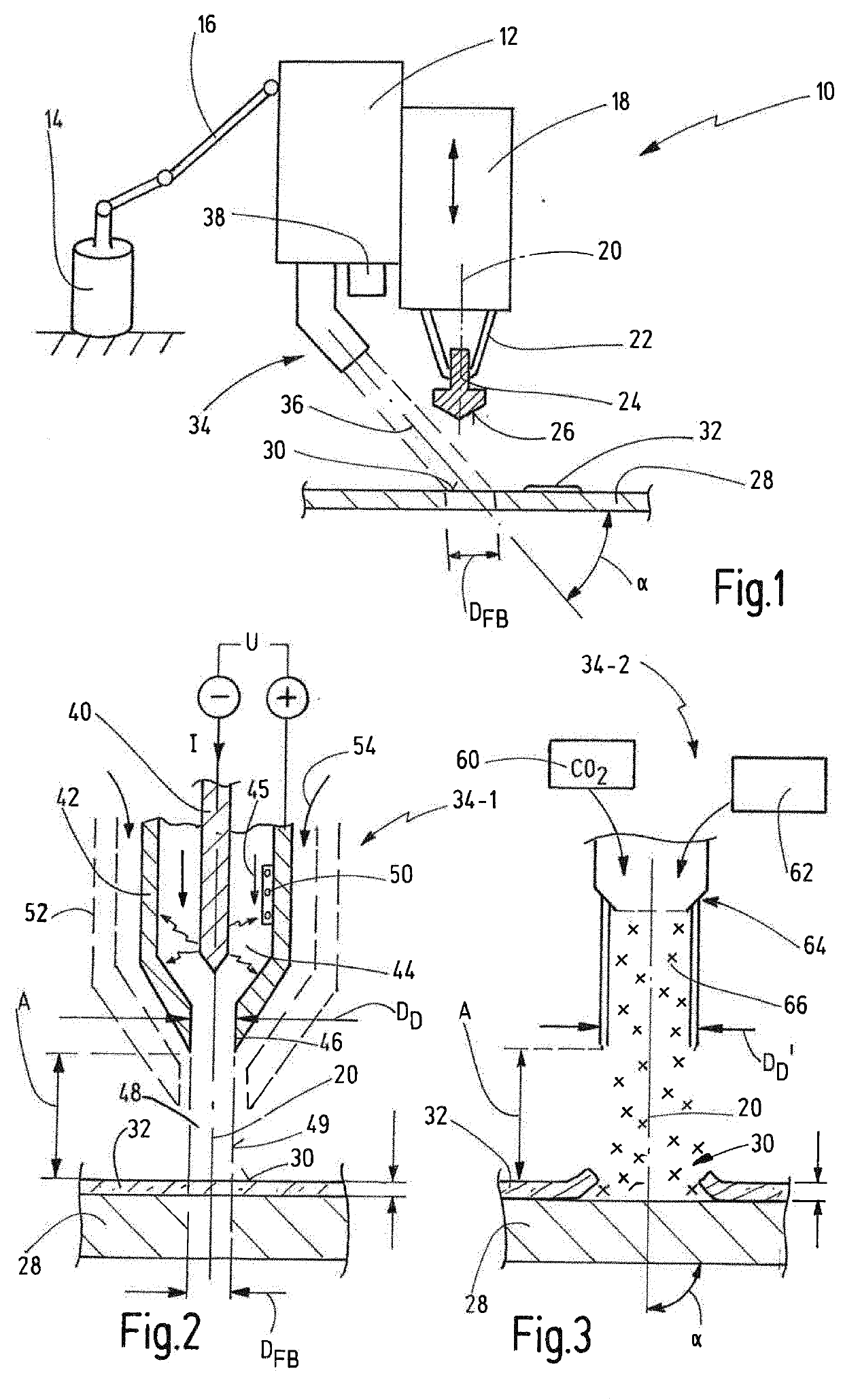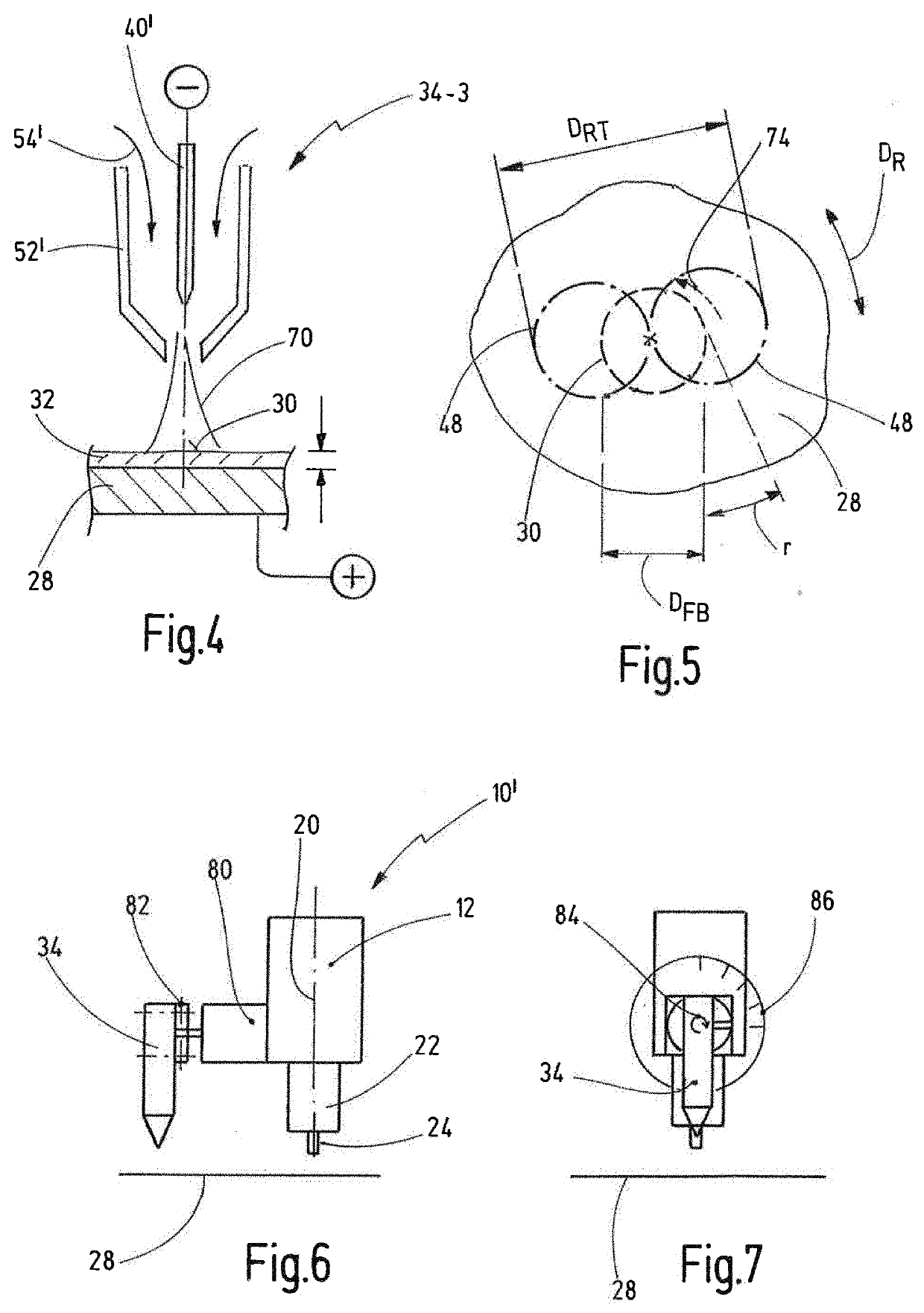Method and device for joining elements to components
a technology of joining elements and components, applied in the direction of soldering apparatus, adhesive processes with surface pretreatment, manufacturing tools, etc., can solve the problems of irregular grain size, affecting the current flow through the arc, and difficult to adapt the joining parameters appropriately
- Summary
- Abstract
- Description
- Claims
- Application Information
AI Technical Summary
Benefits of technology
Problems solved by technology
Method used
Image
Examples
Embodiment Construction
[0097]FIG. 1 is a schematic representation of a joining device for joining joining elements to components, generally referred to as 10.
[0098]The joining device 10 comprises a joining head 12, which can be moved freely in the space by means of a robot 14, said joining head 12 preferably being mounted on one arm 16 of the robot 14 in this case.
[0099]A carriage 18 can preferably be moved along a joining axis 20 on the joining head 12. The maximum stroke of the carriage 18 is preferably larger than a maximum joining stroke.
[0100]A retaining device 22 to retain a joining element 24 is arranged on the carriage 18. The joining element 24 may, for example, be designed as a stud, with a shaft portion which is not shown in greater detail, and a flange portion which is not shown in greater detail, a first joining surface 26 being formed on one side of the flange portion facing away from the shaft portion. The joining element 24 is preferably made from aluminum or aluminum alloy.
[0101]The joini...
PUM
| Property | Measurement | Unit |
|---|---|---|
| Length | aaaaa | aaaaa |
| Length | aaaaa | aaaaa |
| Electric potential / voltage | aaaaa | aaaaa |
Abstract
Description
Claims
Application Information
 Login to View More
Login to View More - R&D
- Intellectual Property
- Life Sciences
- Materials
- Tech Scout
- Unparalleled Data Quality
- Higher Quality Content
- 60% Fewer Hallucinations
Browse by: Latest US Patents, China's latest patents, Technical Efficacy Thesaurus, Application Domain, Technology Topic, Popular Technical Reports.
© 2025 PatSnap. All rights reserved.Legal|Privacy policy|Modern Slavery Act Transparency Statement|Sitemap|About US| Contact US: help@patsnap.com



